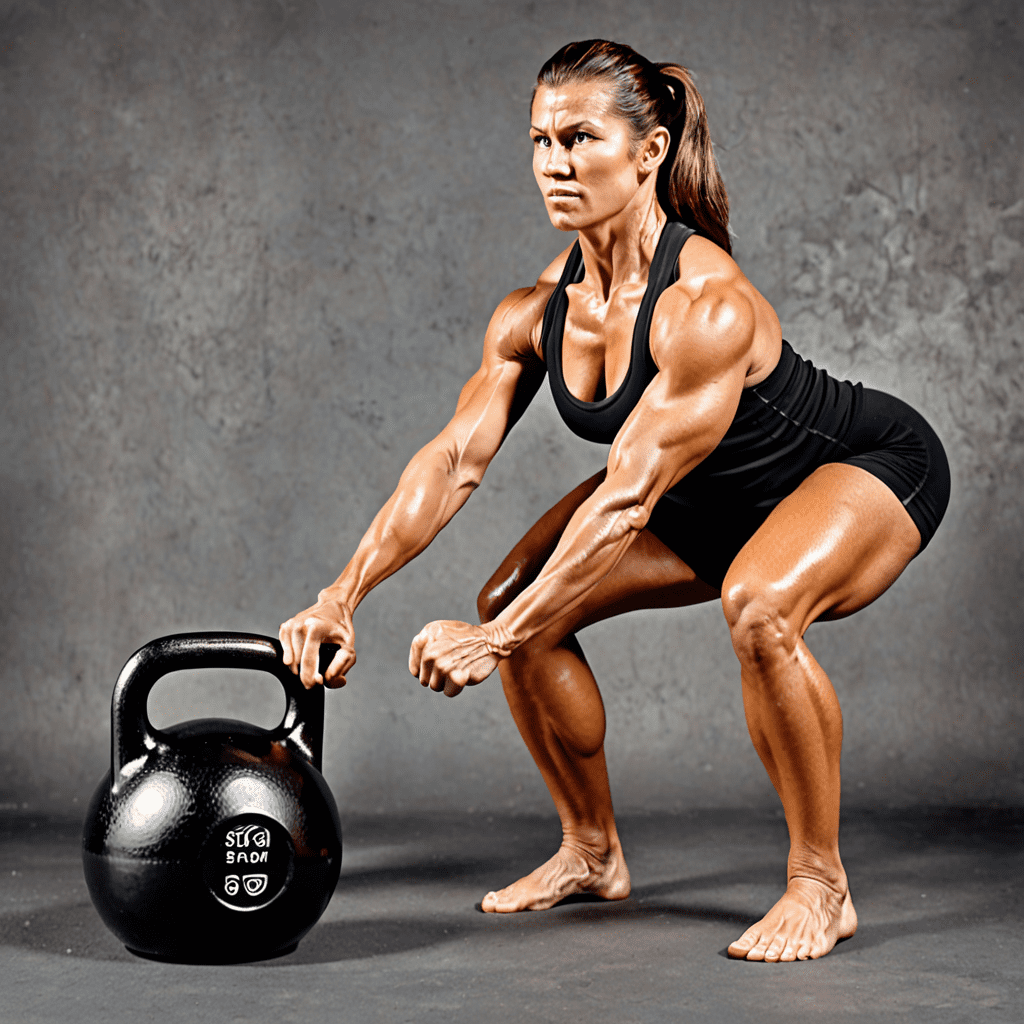
How to Squat with a Kettlebell
If you’re looking to add variety and intensity to your squatting routine, incorporating a kettlebell can be a great option. The kettlebell adds resistance and challenges your muscles in a unique way. In this article, we will guide you on how to properly squat with a kettlebell, ensuring you get the most out of this exercise.
Choosing the Right Kettlebell
Before you start squatting with a kettlebell, it’s important to choose the right weight. You want a kettlebell that challenges you, but still allows you to maintain proper form. Start with a lighter weight and gradually increase as you become more comfortable and confident.
Proper Squat Form
To perform a kettlebell squat with proper form, follow these steps:
- Stand with your feet shoulder-width apart, toes pointing slightly outward.
- Hold the kettlebell with both hands in front of your chest, close to your body.
- Engage your core muscles and keep your chest lifted.
- Initiate the squat by hinging at your hips, pushing your buttocks back as if you’re sitting on a chair.
- Keep your weight on your heels and lower your body until your thighs are parallel to the ground.
- Pause for a moment and then push through your heels to return to the starting position.
- Repeat for the desired number of repetitions.
Common Mistakes to Avoid
While squatting with a kettlebell, it’s important to be aware of common mistakes that can compromise your form and increase the risk of injury. Here are some mistakes to avoid:
- Leaning too far forward: Keep your chest lifted and avoid leaning excessively forward. This helps to maintain proper alignment and protect your lower back.
- Allowing your knees to collapse inward: Ensure your knees stay in line with your toes throughout the squat. This helps to prevent stress on the knee joints.
- Not going low enough: Aim to lower your body until your thighs are parallel to the ground. Going too shallow can limit the effectiveness of the exercise.
- Lifting your heels: Keep your weight on your heels and avoid lifting your heels during the squat. This ensures proper engagement of your glutes and hamstrings.
Variations to Add Challenge
Once you’ve mastered the basic kettlebell squat, you can incorporate variations to add challenge and target different muscles. Here are a few variations to try:
- Goblet squat: Hold the kettlebell with both hands at chest level, similar to the basic squat. This variation challenges your core muscles and upper body strength.
- Kettlebell front squat: Hold the kettlebell with one hand at shoulder level, with your elbow tucked in. This variation targets your core, shoulders, and upper back.
- Kettlebell sumo squat: Stand with your feet wider than shoulder-width apart and toes pointing outward. Hold the kettlebell with both hands between your legs. This variation targets the inner thighs and glutes.
Frequently Asked Questions (FAQ)
Q: How many sets and repetitions should I do?
A: The number of sets and repetitions can vary depending on your fitness goals. As a general guideline, aim for 2-4 sets of 8-12 repetitions.
Q: Can I use a dumbbell instead of a kettlebell?
A: Yes, if you don’t have access to a kettlebell, you can use a dumbbell as a substitute. The movements and form remain the same.
Q: Is squatting with a kettlebell suitable for beginners?
A: Yes, squatting with a kettlebell can be suitable for beginners. Start with a lighter weight and focus on mastering the proper form before progressing to heavier weights.
Q: Are kettlebell squats better than regular squats?
A: Both kettlebell squats and regular squats have their benefits. Kettlebell squats can add variety and challenge to your routine, engaging different muscles. However, it’s important to choose the squat variation that best suits your fitness goals and needs.
Q: Can kettlebell squats help with weight loss?
A: Yes, kettlebell squats can be an effective exercise for weight loss. They engage multiple muscles, increase heart rate, and contribute to calorie burning.
Remember, it’s always a good idea to consult with a fitness professional before starting any new exercise routine, especially if you have any underlying health conditions or concerns. Start with lighter weights and gradually progress as you gain strength and confidence. Squatting with a kettlebell can be a rewarding and challenging exercise that adds variety to your workout routine.

